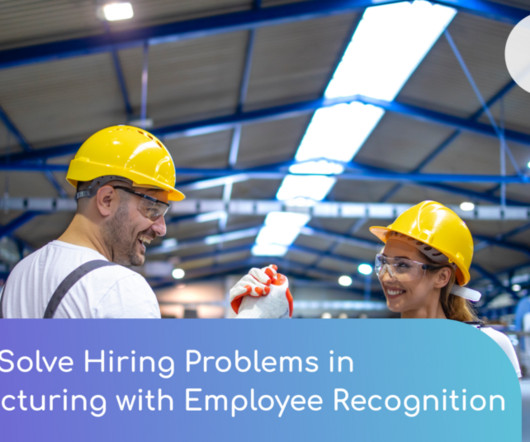How to Solve Hiring Problems in Manufacturing with Employee Recognition
Semos Cloud
MARCH 9, 2023
As more workers migrated to white-collar jobs, and seasoned professionals move closer to retirement, the entire manufacturing sector faces an unprecedented number of missing laborers. between 2018 and 2028, with a potential economic fallout of $2.5 The situation will only worsen because of older professionals’ retirement rates.

















Let's personalize your content